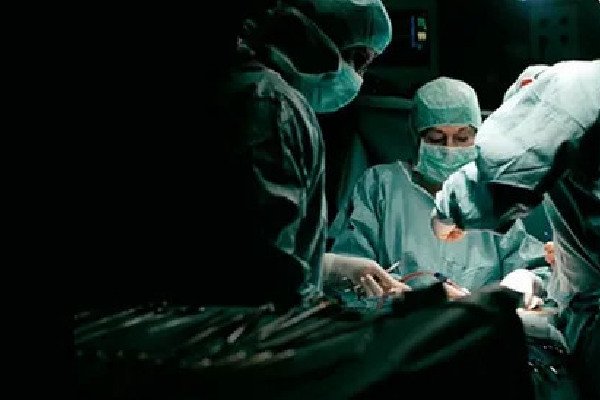Surgery for Prostate Cancer: A Comprehensive Guide
Particularly as men age, prostate cancer is among the most often occurring malignancy affecting males. Although there are several therapy choices, surgery is still a typical procedure especially for early disease diagnosis patients. This page explores the several surgical options for prostate cancer, their advantages and drawbacks, and what patients should expect both before and following the operation.
What is Prostate Cancer Surgery?
Prostate cancer surgery—also called a prostatectomy—involves the removal of the prostate gland. Men with localized prostate cancer—that is, those whose cancer is limited to the prostate and has not progressed to other areas of the body—are advised this frequently. Men with advanced prostate cancer may also be candidates for surgery when paired with other treatments including radiation or hormone therapy.
Types of Prostate Cancer Surgery
- Radical Prostatectomy
- Involves the complete removal of the prostate gland.
- May be performed using different techniques, including open surgery or minimally invasive options like laparoscopic or robotic-assisted surgery.
- Laparoscopic Prostatectomy
- A less invasive procedure performed through small incisions.
- Reduces recovery time and minimizes post-surgical complications.
- Robotic-Assisted Laparoscopic Prostatectomy (RALP)
- Uses a robotic system to assist the surgeon in performing the surgery with greater precision.
- Offers benefits like reduced blood loss, shorter hospital stays, and quicker recovery.
- Transurethral Resection of the Prostate (TURP)
- Usually done to alleviate symptoms in patients with advanced prostate cancer.
- Involves removing part of the prostate tissue to relieve urinary issues caused by the enlarged prostate.
Who is a Candidate for Prostate Cancer Surgery?
- Men with early-stage prostate cancer localized to the prostate gland.
- Patients in good overall health who can tolerate surgery.
- Men whose cancer has not spread to lymph nodes or other organs.
- Those who have not responded well to other treatments such as radiation therapy.
Benefits of Prostate Cancer Surgery
- Potential Cure:For many men with early-stage prostate cancer, surgery offers the best chance of a cure.
- Cancer Control:Surgery removes the prostate gland entirely, reducing the risk of the cancer spreading to other parts of the body.
- Precision with Robotic Surgery:Robotic-assisted procedures allow surgeons to operate with greater precision, potentially minimizing damage to surrounding tissues and nerves.
Risks and Complications
Like all surgeries, prostate cancer surgery carries potential risks and complications. While modern techniques have reduced these risks, it is important to be aware of possible outcomes:
- Urinary Incontinence
- A common side effect where patients may experience difficulty controlling their bladder after surgery.
- For most men, this improves over time with pelvic floor exercises and therapy.
- Erectile Dysfunction
- Damage to nerves that control erections can lead to erectile dysfunction (ED), especially in older men.
- The use of nerve-sparing techniques can reduce the likelihood of ED in some patients.
- Infection and Bleeding
- As with any surgery, there is a risk of infection or bleeding during or after the procedure.
- Blood Clots
- Some patients may develop blood clots post-surgery, particularly in the legs.
Preparing for Surgery
Before undergoing prostate cancer surgery, your healthcare team will guide you through several steps to ensure a smooth procedure and recovery. These include:
- Preoperative Testing:Blood tests, imaging, and other evaluations will be done to assess your overall health and ensure you are fit for surgery.
- Medication Adjustments:Some medications, such as blood thinners, may need to be stopped before surgery to reduce the risk of bleeding.
- Dietary Restrictions:Patients may be advised to follow certain dietary restrictions before surgery, such as fasting the night before the procedure.
Recovery After Prostate Cancer Surgery
Recovery times vary depending on the type of surgery performed, with minimally invasive techniques like robotic-assisted surgery offering faster recovery times compared to open surgery.
- Hospital Stay
- Patients undergoing open prostatectomy may need to stay in the hospital for a few days.
- With laparoscopic or robotic surgery, the hospital stay is typically shorter (1-2 days).
- Catheter Use
- After surgery, a catheter will be placed to help with urination while the body heals. It is usually removed within a week or two.
- Physical Activity
- Patients are advised to avoid strenuous physical activity for 4-6 weeks.
- Walking and light movement are encouraged to prevent complications like blood clots.
- Follow-Up Care
- Regular follow-up appointments with your doctor are essential to monitor recovery and check for signs of cancer recurrence.
- PSA (Prostate-Specific Antigen) tests will be conducted periodically to track the effectiveness of the surgery.
Long-Term Outlook
For men with localized prostate cancer, surgery can be highly effective, offering long-term survival rates and even a potential cure. However, the long-term outlook also depends on several factors, including the stage of the cancer at the time of surgery, the patient’s overall health, and how well they respond to the treatment.
Conclusion
For men diagnosed in the early stages specifically, surgery for prostate cancer is still a strong therapy choice. Better results follow from safer and more exact operations made possible by advances in less invasive procedures including robotic-assisted surgery.
Although prostate cancer surgery carries certain dangers, many men think the possible advantages much exceed any difficulties. To find out if surgery is the best option for you, have a thorough conversation with your healthcare professional.
Understanding the several forms of prostate cancer surgery, what to expect after recovery, and the possible hazards associated helps patients decide their treatment course and general course of health more wisely.






